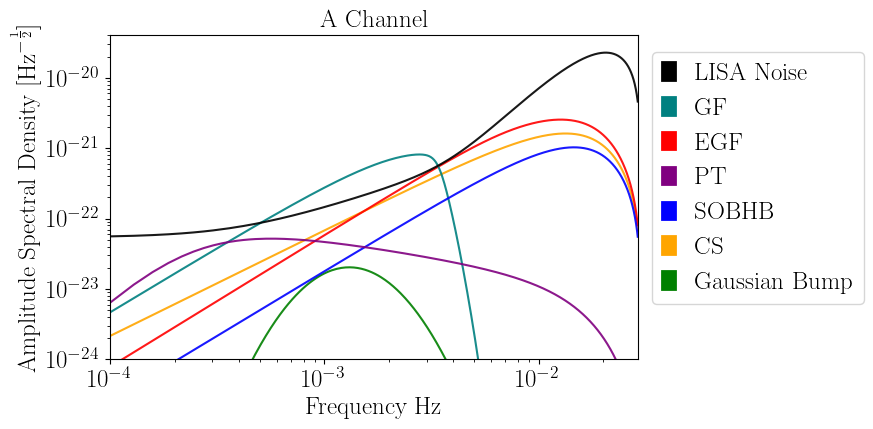BAHAMAS¶
Bahamas: BAyesian inference with HAmiltonian Montecarlo for Astrophysical Stochastic background.
BAHAMAS is a Python package for the inference of stochastic gravitational wave background signals (SGWB) using Hamiltonian Markov Chain Monte Carlo (HMCMC) as implemented in NumPyro, which relies on JAX for automatic differentiation and JIT compilation to GPU/CPU.
BAHAMAS is under active development, so be aware of potential brittleness, bugs, and changes to the API as the design evolves. A reference description for the first BAHAMAS release is available at:
Features¶
The package includes three main command-line interfaces:
bahamas_data: Data simulation and preprocessing.bahamas_inference: Parameter estimation and minimal diagnosticsbahamas_input: From LISA data challange dataset (e.g. yorsh) to bahamas
Both scripts require two input files:
--config config.yaml: Specifies the simulation and inference settings, sampler configuration, and output paths.--sources sources.yaml: Defines the sources to be injected and/or recovered. This includes the true physical parameters of the sources as well as the prior ranges used for inference.
Alternatively, you can use the executable entrypoints:
bahamas-data --help
bahamas-inference --help
bahamas-input --help
The data consist of two datastreams—the A and E channels—which are specific combinations of Time-Delay Interferometry (TDI) variables. In bahamas, the data are generated in the frequency domain, chunk by chunk. This represents a simplification, as it neglects potential biases arising in the time domain, such as windowing effects and spectral leakage. The duration of each chunk—and consequently the frequency resolution—can be configured via config.yaml. However, we recommend not using time lengths shorter than \(10^4 \mathrm{s}\), which corresponds to a frequency resolution of approximately \(\Delta f \sim 0.1 \mathrm{mHz}\), below which the characterization of LISA’s instrumental noise is not guaranteed.
The algorithm also allows for the analysis of stationary, isotropic, and Gaussian stochastic process (e.g., a signal characterized by a power-law power spectral density), enabling the evaluation of the impact of multiple overlapping sources.
We also provide the option to include data gaps, which represent periods during the mission when no useful data are available. These gaps can occur due to scheduled maintenance (scheduled gaps) or unforeseen hardware issues (unscheduled gaps). The goal is not to mitigate the impact of these interruptions but rather to characterize their effect on the reconstruction of stochastic signals.
The algorithm provides flexibility to perform analyses with either full-resolution data or coarse-grained data over different chunks. In the former case, the likelihood describing the data follows a Whittle distribution in each segment, while in the latter, it collapses to a Gamma distribution with degrees of freedom equal to the number of bins used in the averaging process.
Sources¶
This plot shows the types of signals you can simulate using bahamas. The galactic foreground can be generated and analyzed in both stationary and non-stationary assumption.

Notebooks¶
In the data folder, you can find two example notebooks:
example_bahamas: A minimal example demonstrating how to use bahamas.example_modulation: This notebook shows how the modulation model implemented in bahamas accounts for the non-stationarity of the galactic foreground. Feel free to play with the parameters and observe how the modulation changes!
Installation¶
You can install BAHAMAS via pip:
pip install bahamas
Or install from source:
git clone https://github.com/FedericoPozzoli/bahamas.git
cd bahamas
pip install .
License¶
This project is open-source and available under the Apache License 2.0.
For more information, examples, or to contribute, please visit the GitHub repository.